Sustainable Blue Financing: PKSPL IPB University Together with Bappenas and ICCTF Visit GBRMPA

Sustainable blue financing (SBF) is one of the designs that need to be developed in sustainable development based on the blue economy. Head of the Center for Coastal and Marine Resources Studies (PKSPL) IPB University, Dr Yonvitner, assessed that blue development based on natural resources is a form of development choice towards Indonesia Emas 2045 which must be developed carefully.
“Development practices do not just emphasise aspects of state income, but the sustainability of future generations. The future generation health, that is the vision that must be built as the implementation of the Golden Indonesia,” he said.
Sustainable blue economy-based development practices are one of the new options (emerging economy). Currently, the most developed economic practice is related to conservation areas. If all this time conservation areas were considered as areas that should not be touched, then now conservation must be accommodated to be utilised.
“However, the concept remains in harmony with the conservation area, not changing or restructuring the conservation area with physical approaches such as reclamation or ecosystem deconstruction,” said Dr Yonvitner.
With this in mind, the practices that have developed become an attractant for the development of Indonesia’s conservation areas. This consideration then underlies the government through the Ministry of National Development Planning / National Development Planning Agency (Ministry of PPN / Bappenas) of the Republic of Indonesia together with the Indonesia Climate Change Trust Fund (ICCTF) accompanied by PKSPL IPB University conducted a joint workshop with the Great Barrier Reef-Marine Protected Area (GBRMPA) recently in Townsville, Queensland State, Australia.
One of the activities emphasised sustainable financing practices. Josh Thomas Reef Authority, Chief Executive Officer (CEO) of GBRMPA said that sustainable financing in relation to marine conservation must prioritise good governance.
Josh Thomas said that the GBR covers 70 million football fields or an area of 344,400 km2 and a length of 2,300 km. The GBR is also a world heritage area (WHA).
“The existence of GBRMPA is related to ecological objectives, public convenience, marine protection, and other biological resources. There are 13 management tools that are part of its governance, ranging from rules, zoning, management plans, measurable licensing, compliance, revenue, operational policies, local community ownership, education, stewardship, research and monitoring, reporting and complete site infrastructure,” Josh said.
The GBRMPA area is inhabited by more than 3,000 species of coral reefs, 600 islands, 1,625 species of fish, 133 species of sharks and 600 species of hard and soft coral. According to him, good resource management will provide good economic value as well. Based on financing data from GBRMPA in 2021, the direct income obtained reached IDR 319.5 billion, equivalent to IDR 139.9 million per km length of conservation area or IDR 927,816 per km2 of conservation area.
While the total financing comes from state support, contributions from area users reach IDR 1.198 trillion per year. All of this financial support is allocated for the management of GBRMPA. The value of the financing allocation reaches IDR 521 million per km of area length or IDR 3.48 million per square km of area. This income does not include marine services such as fish caught in the MPA area, industrial biotechnology, share income to the community such as rental of community facilities, including homestays, boat rentals, guiding services, transportation services and various other emenitis.
Dr Yonvitner added, “When we are going to implement the sustainable development and financing of the blue economy, we need to prepare the accounting system. In some practices it is known as blue Gross Regional Domestic Product (GRDP) which will provide a balance sheet of finances, expenditures and sustainability of conservation area management.”
“Armed with the results of this meeting, Indonesia actually has enormous potential. The current practice is more than 23 million hectares of Indonesia’s conservation areas and by 2045, Indonesia will have 30 million hectares,” he added.
This means, continued Dr Yonvitner, that if the achievability rate of the GBR is around 50 per cent, then at least Indonesia will be able to generate 400.2 billion per year (2023) or 522 billion in 2045 without reclamation practices. This value will double to 800.4 billion to 1.044 trillion as the quality of conservation areas improves. Again, this does not include reclamation or alteration activities or mining in conservation areas.
“Considering the potential of sustainable blue economy financing, it is not impossible that Indonesia will become a developed country with its marine resources. Growing without destroying the ecosystem, without destroying conservation areas, then we will be able to advance with sustainable natural resources. It is not impossible that the blue economy can improve the welfare of society. Because the calculations above have not considered the value of services directly received by the community,” he concluded. (*/Rz) (IAAS/RUM)


